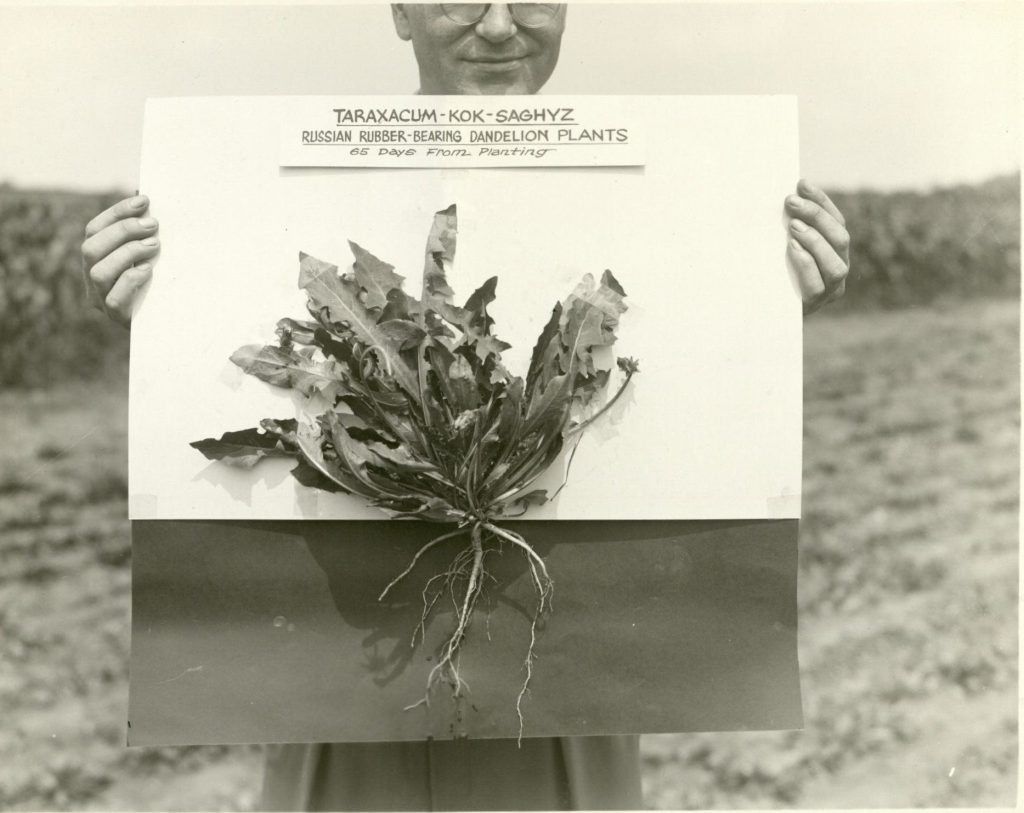Updated, July 2024
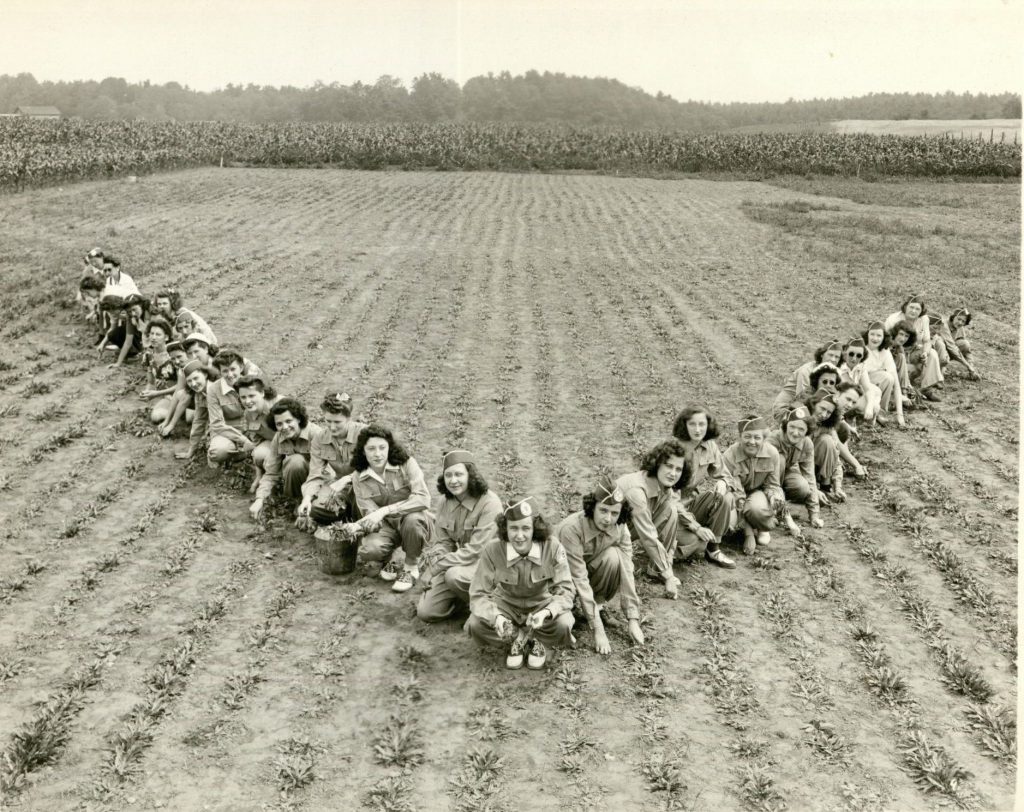 I’ve been on the lookout for photos of local World War II victory gardens, so this image caught my eye as I was searching through a carton of publicity photographs that Special Collections received from UVM’s Extension Service. It is one of three photos taken by Burlington photographer L. L. McAllister that show a group of women in a field. The photos immediately led to questions. Where were the photos taken? Who were the women in uniform? Why were they working in what looked like a field of planted dandelions? Many photos later, in another carton, I found a fourth photo in the series that provided the clue I needed to answer my questions.
I’ve been on the lookout for photos of local World War II victory gardens, so this image caught my eye as I was searching through a carton of publicity photographs that Special Collections received from UVM’s Extension Service. It is one of three photos taken by Burlington photographer L. L. McAllister that show a group of women in a field. The photos immediately led to questions. Where were the photos taken? Who were the women in uniform? Why were they working in what looked like a field of planted dandelions? Many photos later, in another carton, I found a fourth photo in the series that provided the clue I needed to answer my questions.
In the fourth photo, a UVM agronomist displays a full-grown dandelion plant–including roots–with a label that reads, “Taraxacum-kok-saghyz/Russian Rubber-Bearing Plants/65 Days From Planting.” At that time, UVM’s Agricultural Experiment Station generally undertook projects designed to solve problems related to Vermont conditions, but during World War II , the Experiment Station worked on projects to help the war effort. One of those projects was a study of the potential yield of seed and rubber from a Russian dandelion, Taraxacum-kok-saghyz.
When the Japanese cut off most of the world’s supply of natural rubber, the United States Forest Service and the Bureau of Plant Industry initiated an emergency rubber project to explore the potential of growing rubber within the continental United States. From 1942-1944, the Department of Agriculture conducted a program of field-scale production and research at various locations with conditions suitable for growing Russian dandelions. Vermont was one of the 23 test sites.
Under the direction of agronomists Paul Miller and H. L. Smith, one acre of the Russian dandelion seed was planted at the UVM Farm, then located off East Avenue in Burlington. A major challenge to growing the dandelion was the need to keep the plants free from weeds. With farm labor at a shortage, the Experiment Station turned to volunteers. On July 27, 1942, the Burlington Free Press included an article headlined “Women’s Volunteer Drivers Corps Gives Up Sun. Comforts To Weed Taraxacum-kok-saghyz.” Thirty-five members of the Drivers Corps gathered on a Sunday to weed, thin and transplant the dandelions. The article is illustrated with the L.L. McAllister photographs.
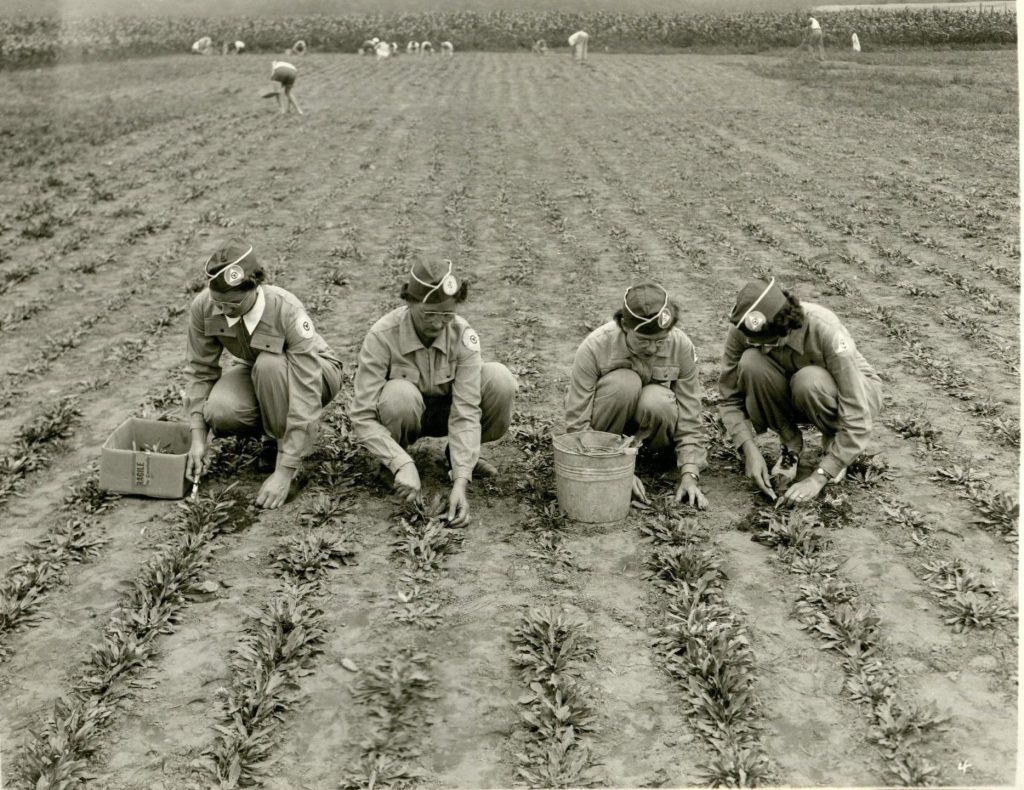
Mrs. Gerald E. Prescott, the leader of the Burlington unit of the Volunteer Drivers Corps, and platoon leaders Mrs. Esther I. Adler, Miss Barbara Mitchell, and Mrs. Thomas Loudon directed the weeding.
The Extension Service continued the trial the following summer. In August 1943, the Burlington Free Press reported that almost a ton of roots were harvested and sent to a research laboratory in Philadelphia for analysis. Unfortunately, the analysis revealed that the Burlington harvest contained mostly rogue dandelions that yielded little or no rubber.
Update: In 2024, when researchers wrote to request copies of the photos in this post, we discovered two more, taken by photographer James Detore to illustrate a story in the Burlington Daily News titled “They’re Off to be Tested for Rubber Content” and published October 31, 1942.
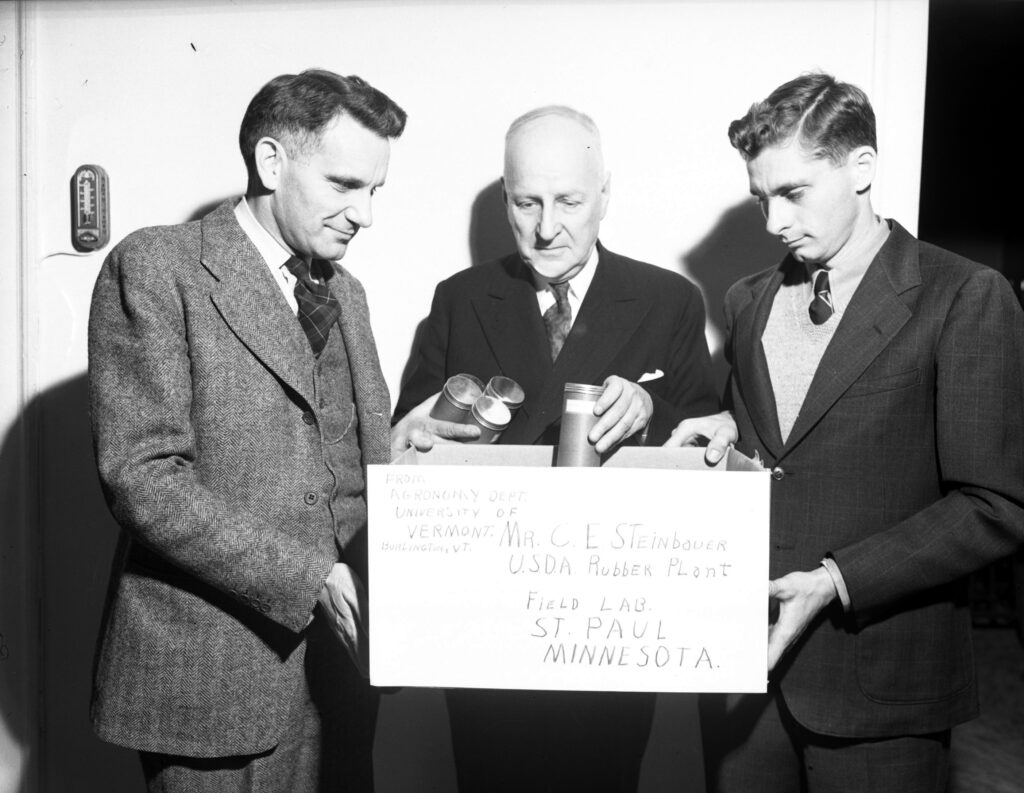
Joseph Winterbotham, center, packs tubes with dried roots into a box headed to a Minnesota Laboratory for testing. UVM agronomists Paul R. Miller (right) and Lester H. Smith (left) are holding the box.
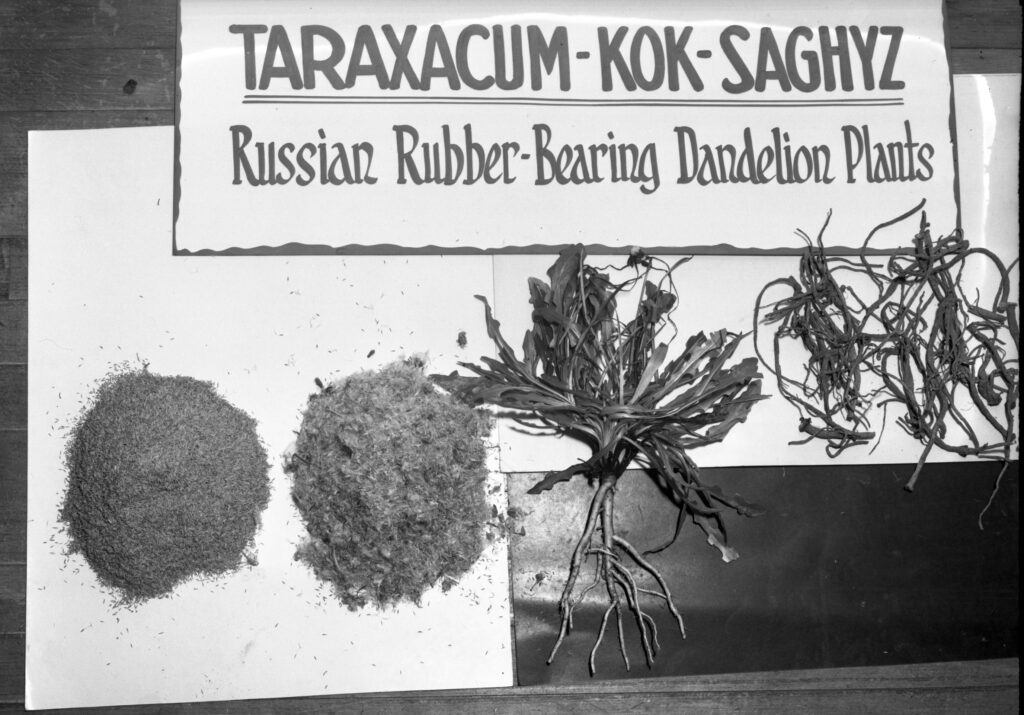
Left to right: seed used in the trial, chaff with seed harvested at UVM, a fresh green plant, and dried roots.
For more information about the emergency rubber project:
Whaley, W. Gordon and John A. Bowen. Russian Dandelion (Kok-Soghyz): An Emergency Source of Natural Rubber. USDA Miscellaneous Publication No. 618. Washington, D.C.: U.S. G.P.O., 1947.
Learn about current research on rubber-bearing dandelions:
Bomgardner, Melody. Dandelions, the Scourge of Lawns, May Be a Fount of Rubber. Chemical and Engineering News 94 (2016): 28-29.1
Contributed by Prudence Doherty
Public Services Librarian

